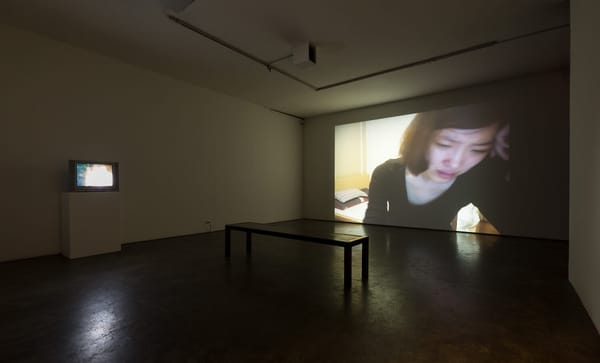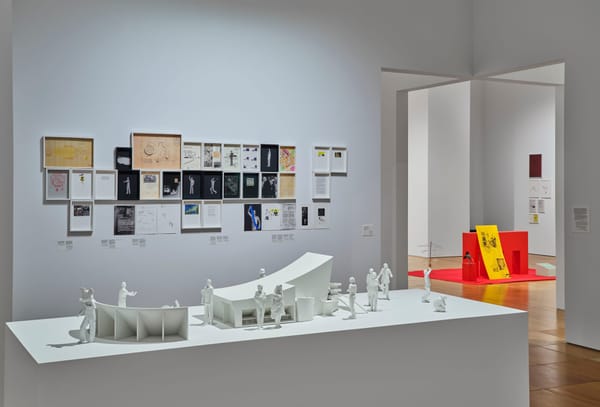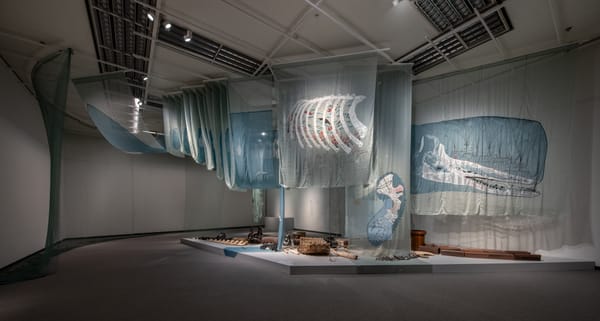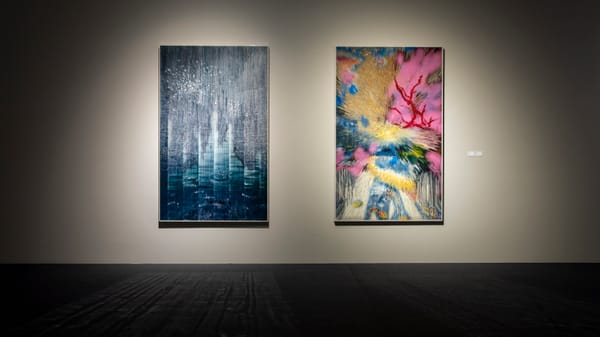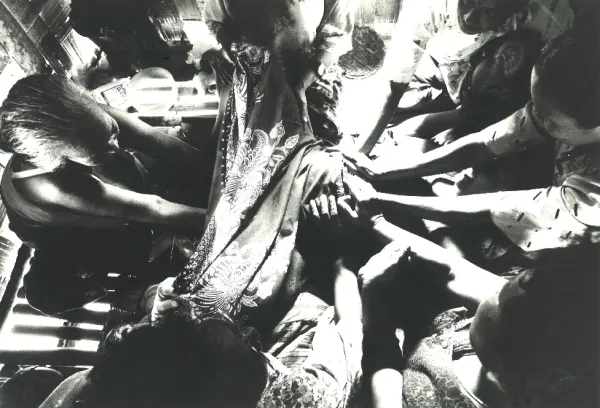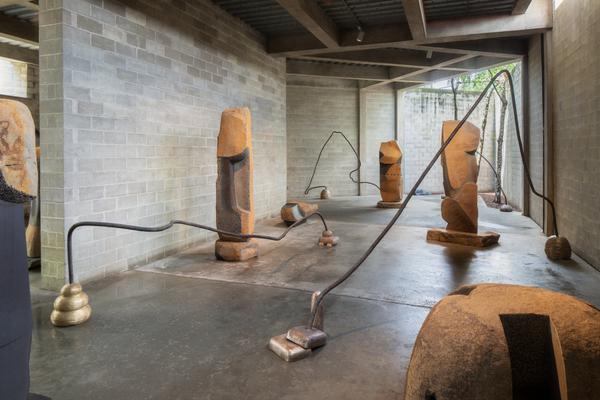Shows
Sujith SN’s “The Hour of Becoming”
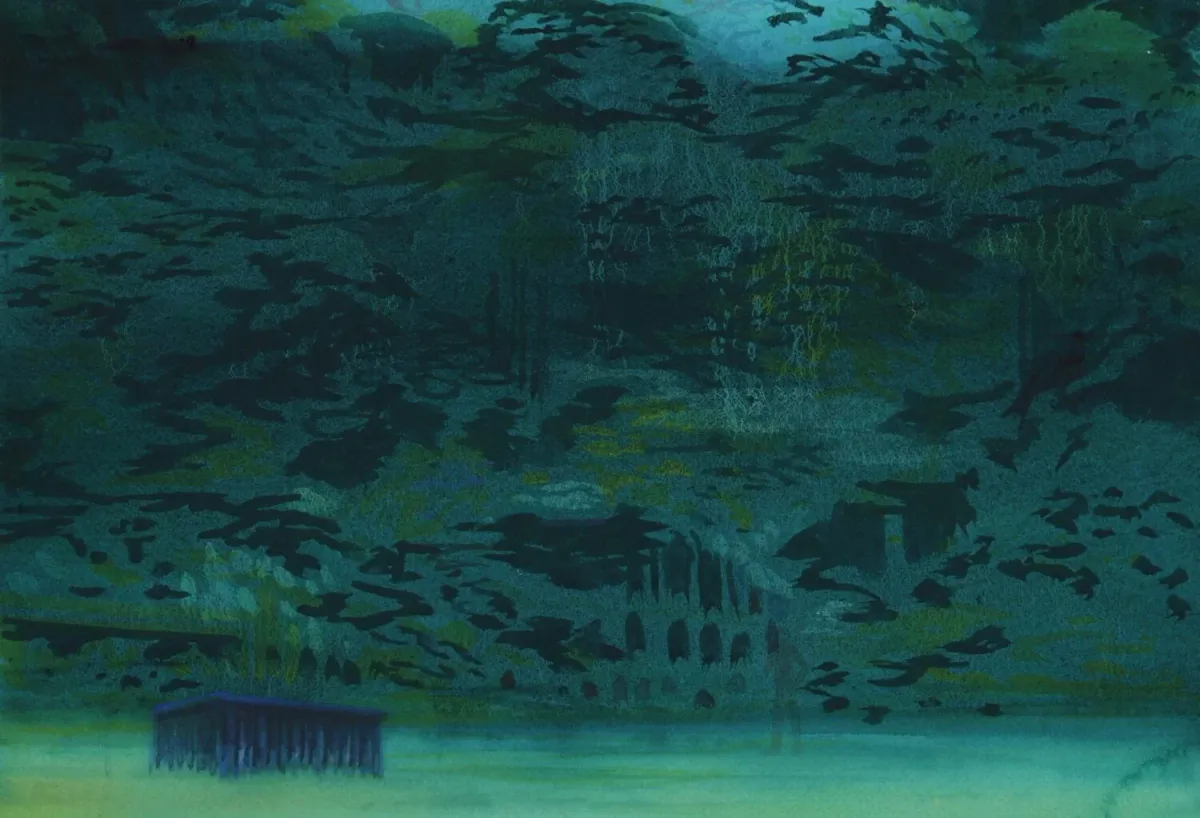
Sujith SN
The Hour of Becoming
Sakshi Gallery
Mumbai
Apr 10–May 3, 2025
A pulsating glow emanates from the canvases in Sujith SN’s recent exhibition, “The Hour of Becoming.” What appears as light, upon closer investigation, is revealed to be an illusion created through color. Still, the meditative luminescence seemed to hum as viewers moved between the paintings, each work carefully balancing darkness with light, nature with the man-made world, movement with stillness, and abundance with emptiness. While the works evoke a stark sense of isolation, they suggest contemplative solitude rather than despair.
The Kochi-based artist’s architectural background is evident throughout these works. Built structures emerge against dense foliage and bodies of water, their juxtaposition creating a tension that permeates the artworks. The architectural forms could represent the colonization of indigenous land, or more broadly, human encroachment upon the remainders of India’s untouched natural world.
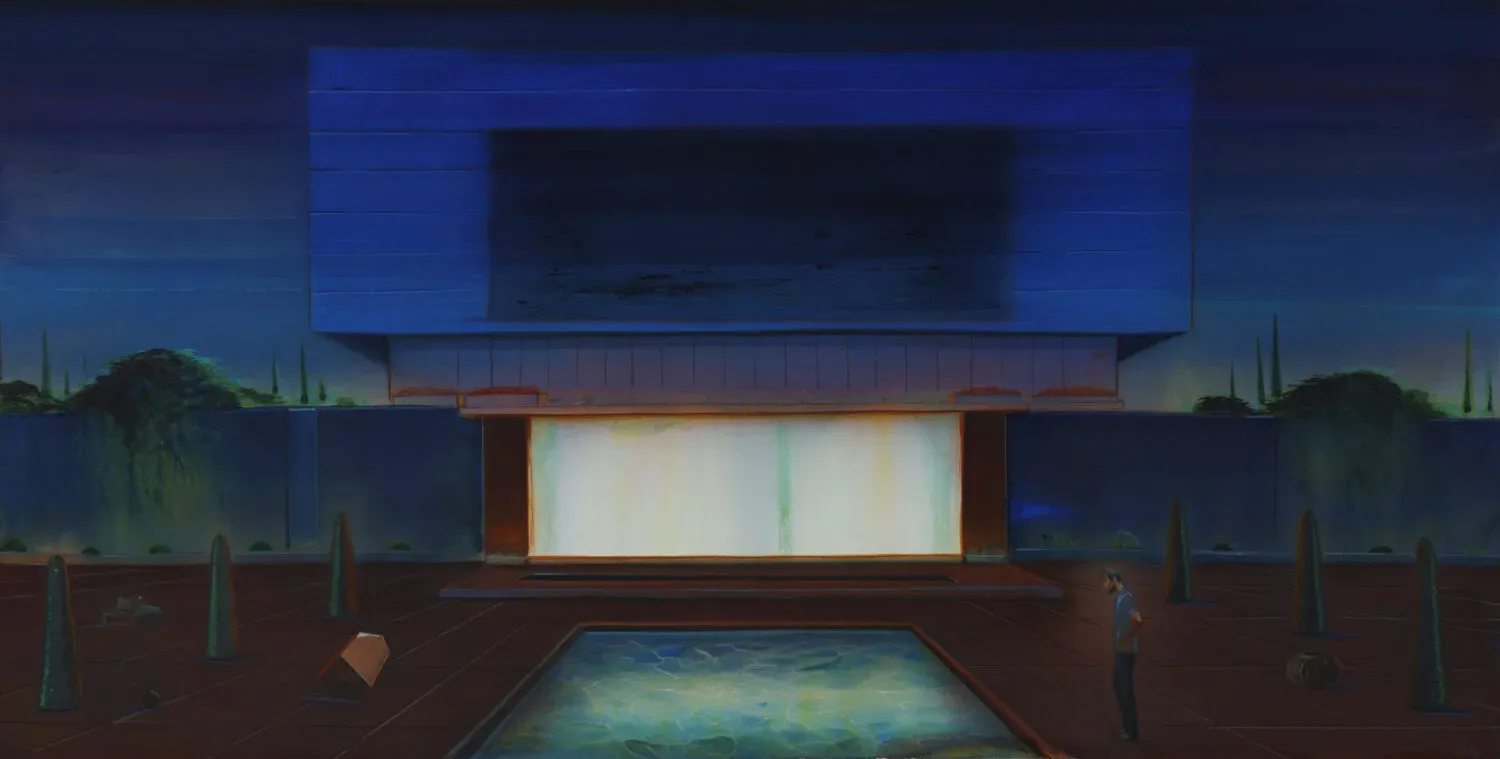
In Archipelago (2024), the building’s gentle illumination becomes a symbol of human intervention. Here, the modernist structure’s facade mirrors the sky’s hues, while light seeping out from the windows on the ground floor illuminates only the swimming pool. Boundary walls separate the ordered space from the unkempt trees in the darkness beyond, creating a stark contrast with the meticulously manicured landscape in the foreground. Meanwhile, a lone, pensive man stands by the pool. His solitary figure and the building echo each other in their isolation—both appear oddly vulnerable against the surrounding darkness, almost like creatures in an awkward displacement.
A sense of futility suffuses two paintings, titled Prologue (both 2024–25), which show two men wrestling in a vast barren land. The pair is caught in a charged yet intimate brawl, their forms aglow against the rocky terrain—what the winner will attain, however, is unclear. One might read the conflict as man’s innate power struggle with himself: having defeated nature, leaving it barren, man finds only himself left to battle. The meaninglessness of the fight comes into focus through the absence of context, human or natural. Perhaps this suggests a paradox: in conquering nature, humanity defeats itself.

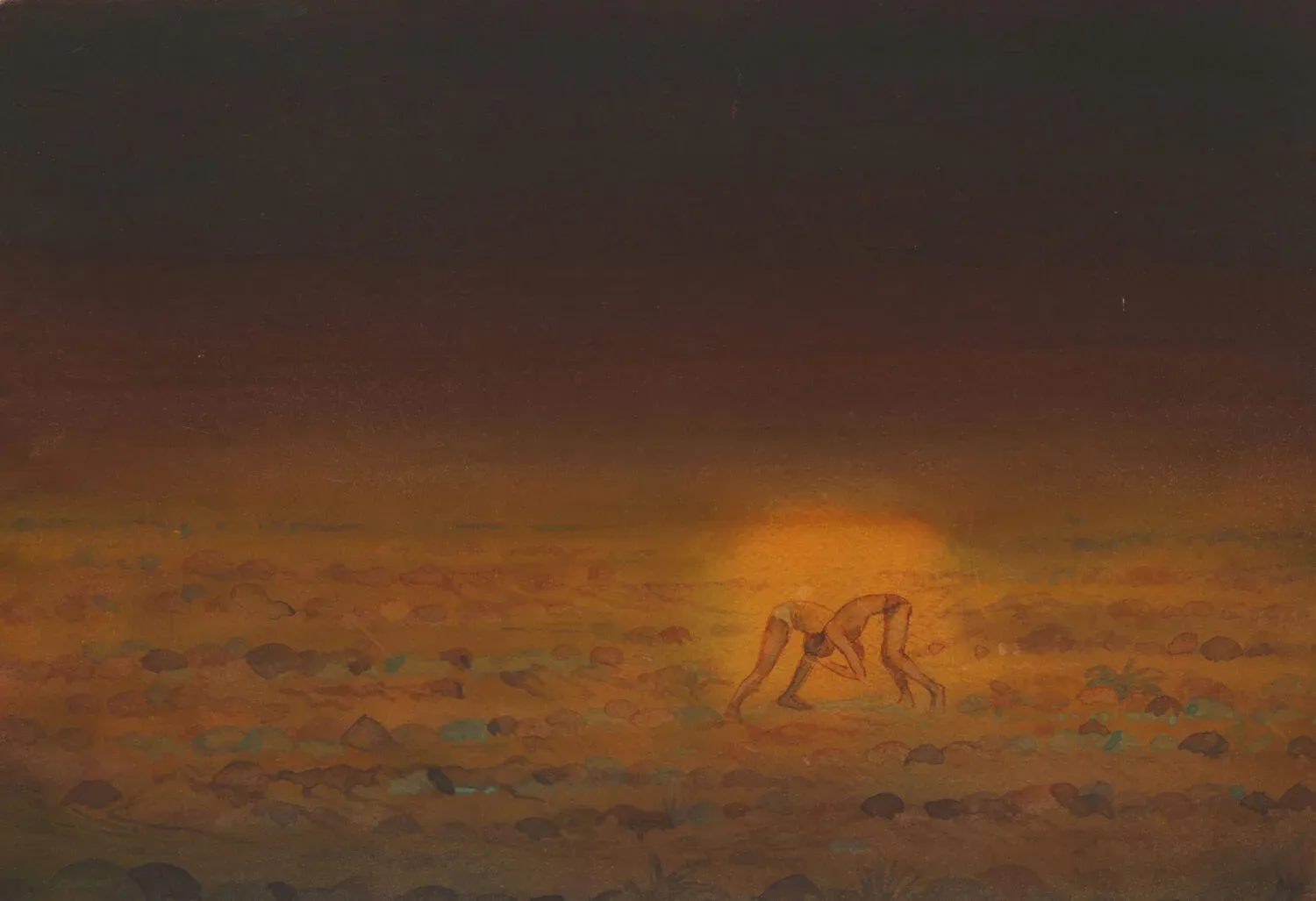
SUJITH SN, Prologue (left), 2024–25, tempera on paper, 30 x 40 cm, and Prologue (right), 2024–25, tempera on paper, 30 x 40 cm. Courtesy the artist and Sakshi Gallery, Mumbai.
Two other paintings feature a silhouetted elephant, both of which are almost identical in form and stance. The first, also titled Prologue (2024–25), presents a seemingly ordinary and tranquil scene of an elephant walking through a lush green environment. In the much larger work, Oblivion (2024), an elephant fills the frame against a haunting crimson sky. Here, the painting appears surreal and unsettling—its saturated burgundy and purple shades conjure a restless and violent atmosphere, while the brash strokes create a sense of movement and resistance. A closer look reveals what looks like architectural debris beneath the elephant’s feet, littered across the ground, barely visible in the apocalyptic glow. The elephant in Oblivion emerges almost like a ghost, a symbol of ecological guilt haunting the ruins of human intrusion.
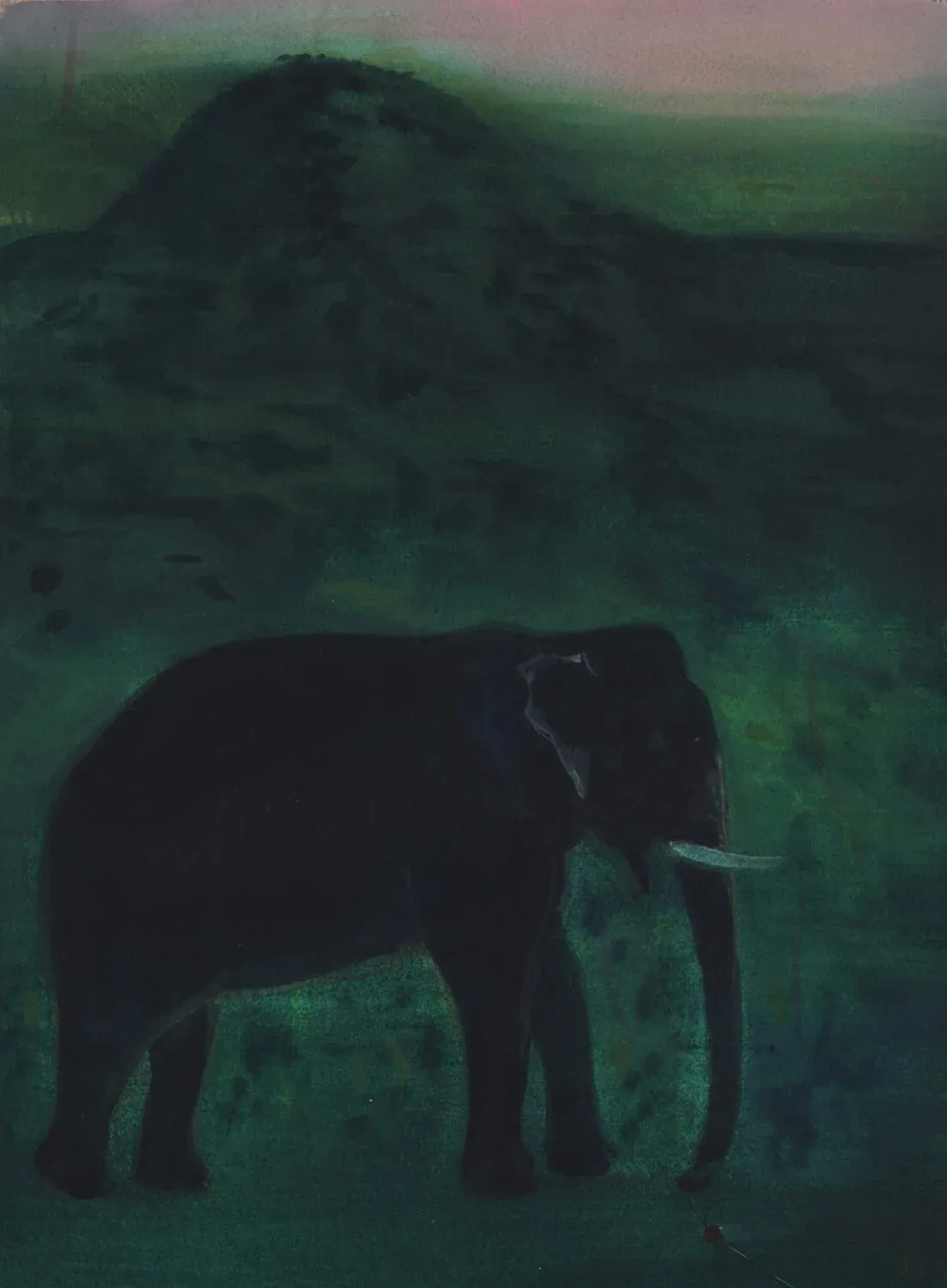
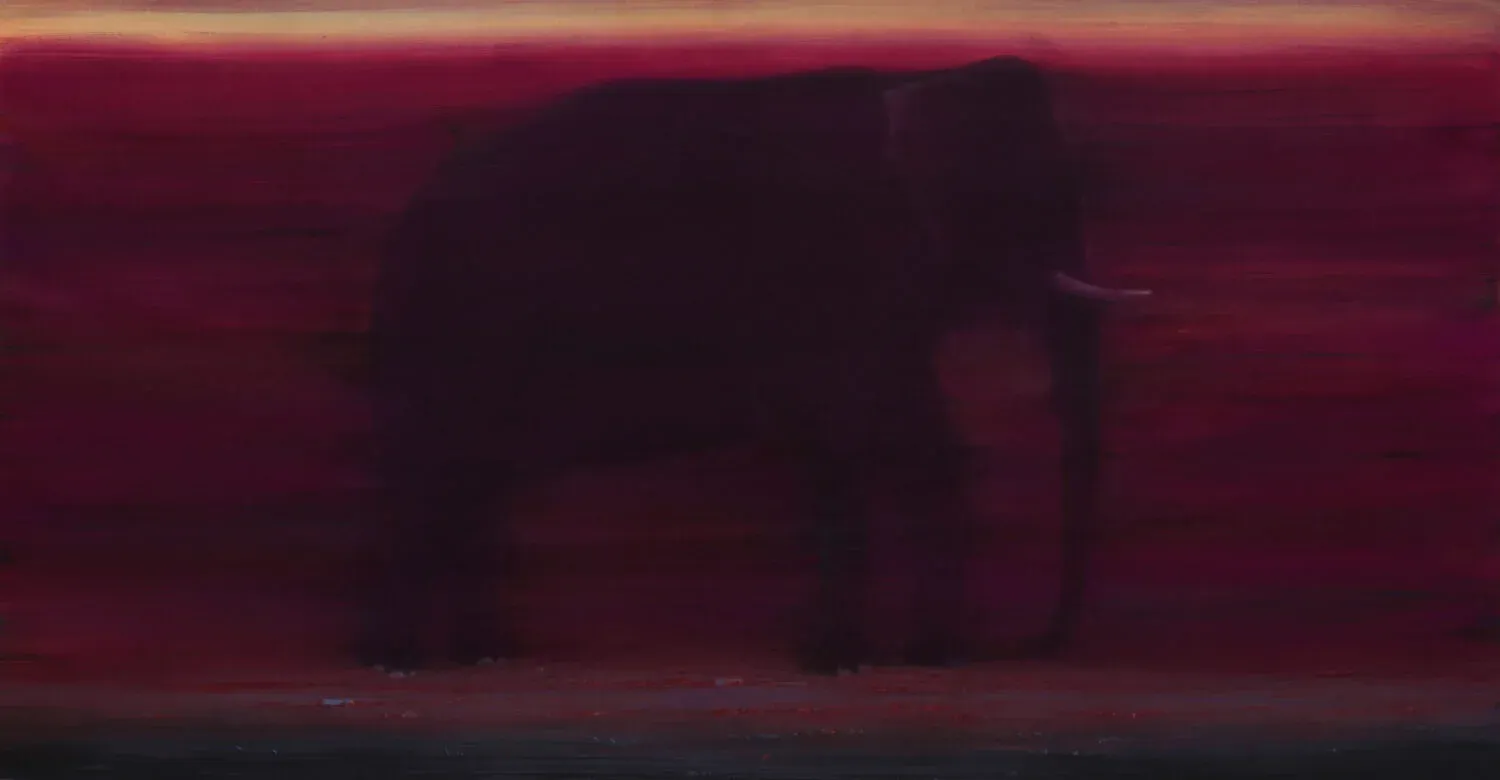
Botanical Garden of the Desert (2024) juxtaposes a verdant landscape with geometric structures. The interesting element here is the Indian flag, its narrow pole almost hidden and the fabric hanging limply, mirroring the same quiet desolation found in Archipelago. Against the ordered geometry and emerald surroundings, the motionless flag becomes a marker of abandonment.
An entrancing luster runs through the works, drawing attention to itself while remaining elusive to interpretations. SN’s light, at once soothing and ominous, illuminates our fraught relationship with the environment. In each canvas, this paradoxical gleaming guides us to question what we call progress, and what we lose in pursuit of it.
Rabia Kapoor is a Mumbai-based writer and critic.


